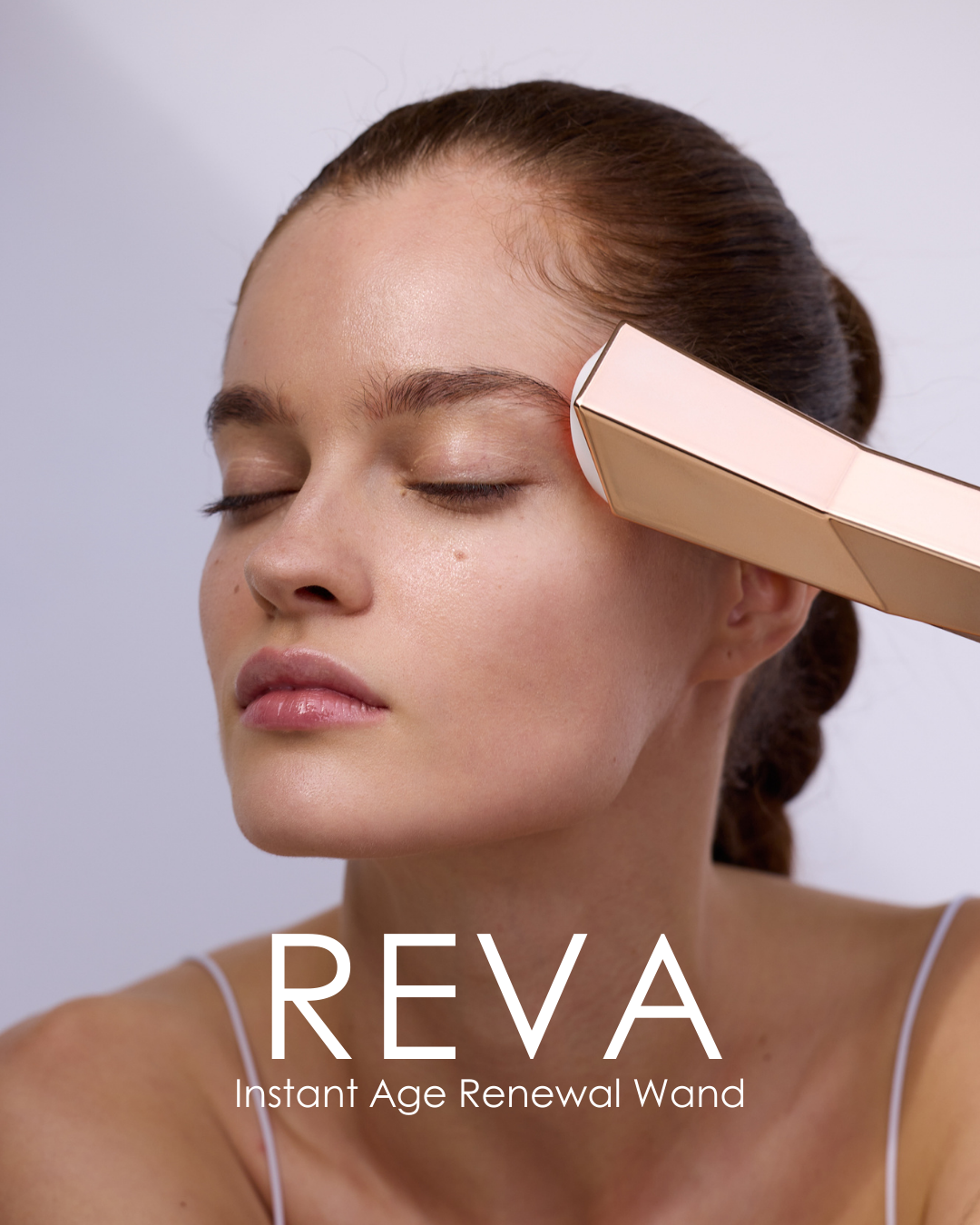
Read This Before You Purchase an LED Light Therapy Mask
IN THIS ARTICLE:
- 01 Wavelength
- 02 Number of LEDs
- 03 Irradiance
- 04 Time
- 05 Budget
- 06 Comfort and Personal Preference
- 07 The Takeaway: Everything You Should Consider When Purchasing an LED Light Therapy Mask
7-minute read
Summary: When purchasing an LED mask, top considerations include wavelength/colors, coverage, power density of the device, treatment time, safety considerations, and budget
It's tempting to choose an LED mask with the best ad campaign or the widest social media reach, but don’t let marketing hype outshine what really matters—device specifications.
Becoming more tech literate with your beauty devices is the key to investing in the highest quality products that deliver on their claims.
Certain variables such as the number of LEDs, wavelength precision, irradiance, and joules/energy output determine how well the device will ultimately perform. Below we take you through what to look for in red light therapy mask and some personal factors you may want to consider before investing in an LED light therapy device.
Wavelength
The skin absorbs light at different wavelengths - red, blue, green, and yellow all reach different layers of the skill to trigger cellular responses known to improve skin health and appearance.

Red (630nm)
Red light, with wavelengths between 620 and 750nm, penetrates the deepest of all visible light making it the ideal option to trigger collagen synthesis and cell regeneration. Even within this range, an optimal red light wavelength of between 630 and 660nm delivers the most effective skin treatment. Always look out for a device with red light wavelengths within this range.
Infrared (850nm)
Infrared light exists on the invisible spectrum and penetrates deeper than red light. It can even reach underlying tissue and muscles, making it an effective therapy for pain and inflammation. Infrared wavelengths range from 700 to 1,000nm but again have an optimal wavelength of around 830 - 850nm to trigger mitochondrial activity and boost cell regeneration.
Deep Infrared (1072)
Also existing on the invisible light spectrum deep infrared wavelengths range between 1000-1400nm. Deep infrared light is a particularly powerful treatment for deep static wrinkles and areas of the face and neck prone to deep wrinkle formation such as crow’s feet, 11 line, marionette lines, and forehead. It is also suitable for thicker skin and is often incorporated into male-specific devices - but these are suitable for women too.
Blue (460nm)
Blue light therapy has the shortest wavelength on the visible light spectrum ranging from 415-470nm with an optimal wavelength of 416 or 460nm. It is an effective acne treatment due to its short, yet intense light wavelength that acts on the epidermal skin layer to target acne-causing bacteria and regulate excess oil production.
Green (520nm)
Green light wavelengths range from 495-570nm with an optimal wavelength of 520 to target hyperpigmentation.
Other
Since all other LED light colors (yellow, cyan, white, purple, and orange) are combinations of red, green, and blue, these three wavelengths are the most important to consider in terms of wavelength precision.
Number of LEDs
The number of LEDs is crucial in ensuring complete and even coverage of the treatment area. If LEDs are spaced too far apart, the effectiveness of the treatment is reduced. It’s important to choose a device with high-quality LEDs with at least one safety certification. The LumaLux Face and LumaLux Face+ feature 800 and 1600 LEDs respectively, delivering professional-grade treatment and maximum light energy output—four times more than the industry average. Densely packed LEDs provide a more thorough skin treatment in less time and significantly increase the total energy delivered. Just as you wouldn’t apply moisturizer or serum to only part of your face, the same principle applies to LED light therapy. The number of LEDs becomes particularly critical when evaluating the limitations of testing a device’s power density based on a single LED, rather than assessing the total energy output of the entire device.
LumaLux vs Competitor Brand

LED Mask Irradiance
Irradiance refers to the ‘power density’ or strength of an LED. It is measured in milliwatts per cm squared. It measures how much energy is in one square cm of your skin per second. The LumaLux Face and LumaLux Face+ Devices have a peak power density per LED of 30mW per cm2. Many brands measure the power density of the device by testing a single LED using a device known as a spectrometer. A spectrometer or spectral sensors measure the light emitted by the LED bulbs. The sensor is placed over the top of the LED at a right angle.
The sensors measure the power of a single bulb. This measurement does not the total number of LEDs for example, so a device with a peak power of 30mW per cm2 and 66 bulbss does not produce the same power as a device with a peak power of 30mW per cm2 and 200 bulbs.
It’s essential to check whether the LEDs on your light therapy mask are sparsely or densely packed to ensure that the power output truly reflects the ‘energy peak power.’ When designing our LumaLux Collection, we made it a priority to ‘fill the gaps’ (literally) commonly found in LED devices. Our face and neck devices use 800 LEDs each, with the LumaLux Face+ featuring up to 1600 LEDs. In comparison, many brands only use between 66 and 100 LEDs, which doesn’t provide full coverage or deliver an effective treatment within the recommended treatment time.
Time
Masks with lower irradiance and fewer LEDs will naturally take longer to deliver the optimal light dose needed to trigger the desired cellular response. Consider how much time you're realistically willing to spend wearing an LED mask. If dedicating 30+ minutes per day doesn’t seem feasible, opt for a mask with a shorter recommended treatment time, ideally under 10 minutes. Thanks to the high power density of LumaLux, the recommended treatment time to achieve optimal light energy for visible results is just 3 minutes
Budget
Another important personal factor to consider is your budget for an LED light therapy mask, as prices vary widely. Once you've identified key features like wavelength, irradiance, and the number of LEDs, start comparing masks that meet these standards. Investing in a mask that doesn’t meet these criteria might result in an ineffective product.
Comfort and Personal Preference
While technical specifications are crucial, personal factors such as comfort, eye protection, and design are equally important. Some devices are made from soft, flexible silicone for added comfort, while others use rigid plastic. Additionally, some devices include built-in eye protection to block out light and safeguard your eyes, whereas others simply recommend keeping your eyes closed during treatment.
Through extensive research, we found that users are more consistent with their treatments when they choose a mask made from comfortable, soft silicone that’s both easy to wear and clean. Our LumaLux Collection features upgraded ultrasoft silicone that won’t stick to the skin, preventing any pulling, dragging, or irritation, ensuring a comfortable experience every time.
LumaLux Face | Pro LED Light Therapy Mask
Our most advanced LED mask for deeper skin renewal - fine lines, acne, hyperpigmentation, skin texture
The Takeaway: What To Look For in A Red Light Therapy Mask?
When choosing a high-quality LED light therapy device, the three most important factors to focus on are wavelength, irradiance, and the number of LEDs. Once these key criteria are met, it's also important to consider aspects like treatment duration, comfort, and ease of use. Taking these personal factors into account will help you stay consistent with your treatments, ensuring you achieve the best possible results.


written by Charlotte Rycroft















2 comments
Bonjour, Biau ! Merci beaucoup pour votre retour ! Nous sommes ravis d’apprendre que vous voyez déjà de beaux résultats avec votre masque LED. La constance est la clé pour maximiser les bienfaits, alors continuez votre routine et n’hésitez pas à nous partager votre progression. Si vous avez des questions ou besoin de conseils pour optimiser votre traitement, nous sommes là pour vous aider !
Project E Beauty
Je vous remercie le masque led est vraiment très bien je commence à avoir de beaux résultats suis très contente
Biau
Leave a comment
This site is protected by hCaptcha and the hCaptcha Privacy Policy and Terms of Service apply.